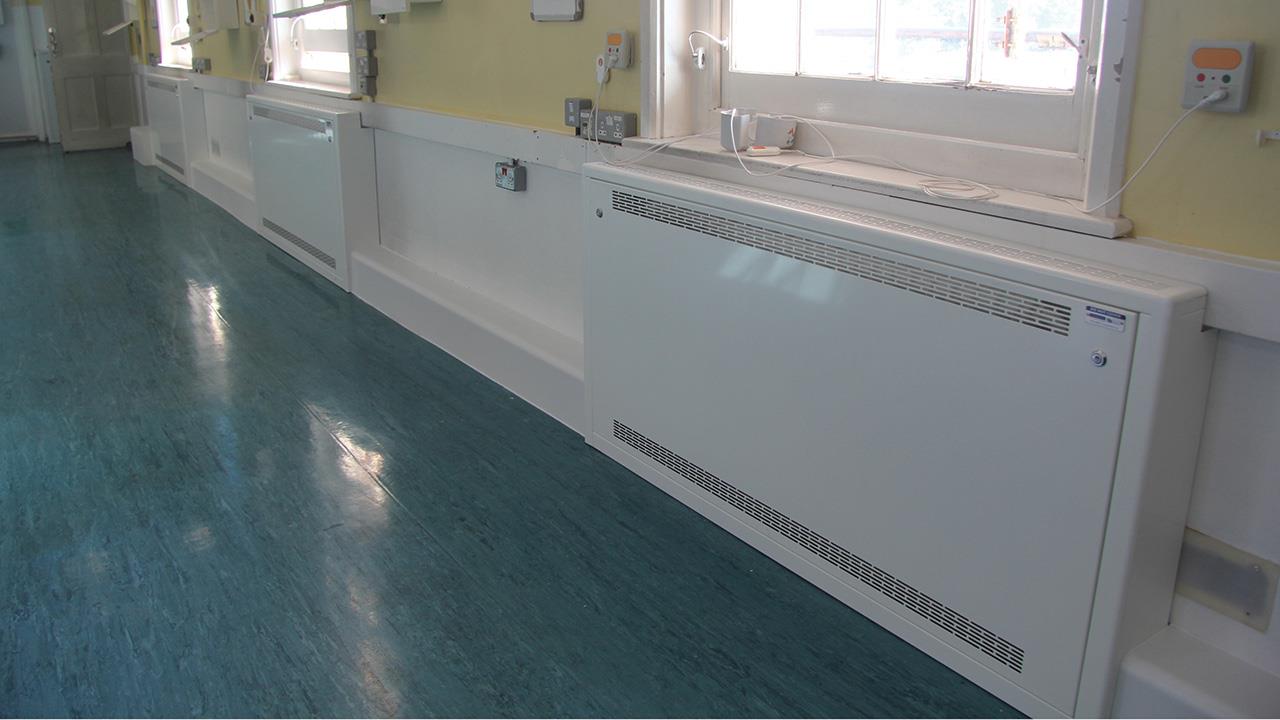

Gavin Byram, National Sales Manager at Pendock, explains how low surface temperature (LST) radiator guards can be an ideal solution for many applications.
Many buildings in the UK are still being heated via conventional, standard efficiency boilers, with radiators operating at temperatures of 60-80°C (the temperature of radiators fed by high efficiency condensing boilers generally being much lower).
This can pose a burn risk, as contact with surfaces above 43°C can lead to serious injury, according to the Health & Safety Executive (HSE). Indeed, there were 838 hospital admissions in England between April 1 2018 and March 31 2019 due to unintentional injury by contact with hot heating appliances, radiators, and pipes, according to NHS data.
The risks are potentially greater in buildings used and occupied by vulnerable groups, including children and the elderly. From the hospital admissions mentioned above, 256 involved children aged 16 and under and 327 involved people over 65. Contact burns to those over 65 can prove fatal.
It’s therefore essential for the owners and managers of buildings, such as nurseries, schools, leisure centres, health centres, surgeries and clinics, sheltered accommodation, and care homes to manage the risks. This creates an opportunity for installers who are working on heating systems or refurbishing bathrooms or washrooms in these types of buildings to recommend low surface temperature (LST) radiator guards – adding value and increasing revenue.
An appropriate solution for many applications, LST radiator guards fit neatly over existing radiators, reducing the surface temperature to a safe level, without affecting the heat output, performance or energy efficiency of the heating system. A baffle can be fitted below the radiator grille to ensure that surface temperatures do not exceed 43°C.
This type of LST radiator guard meets the requirements set out in several guidance documents. For example, The Education (School Premises) Regulations state that in a special school, nursery school, or teaching accommodation used by a nursery class in a school, the surface temperature of any radiator, including exposed pipework, which is in a position where it may be touched by a pupil shall not exceed 43°C.
Similarly, the HSE information sheet on hot water and surfaces in health and social care states that where an assessment has identified that vulnerable people may come into prolonged contact with hot surfaces, the equipment should be designed or covered so that the maximum accessible surface temperature does not exceed 43°C.
The guidance in Section 5 of Approved Document M: access to and use of buildings, volume 2 – buildings other than dwellings is for any heat emitters in sanitary accommodation to be either screened or have their exposed surfaces kept at a temperature below 43°C.
When selecting products, it’s important for installers to pay close attention to quality, performance, and longevity. High quality LST radiator guards should be easy to fit (the inclusion of pre-formed skirting cut outs and valve access panels make installations quick and simple, but also neat and consistent), and they shouldn’t affect the radiator’s heat output or energy efficiency or have any surface hot spots.
Ease of cleaning and maintenance should be another consideration – higher quality products are likely to include antibacterial coatings, as well as drop-down lockable panels to provide access to the radiator.
The inclusion of radiused ‘bullnose’ corners, which eliminate sharp edges, can also be a benefit. Anti-ligature measures are another option; a mesh can be fitted behind the radiator grille to prevent a cord or rope being attached to it for the purpose of hanging or strangulation.
Radiators operating at high temperatures pose risks for vulnerable people – potentially causing serious injuries or even fatalities. The installation of LST radiator guards ensures a safe surface temperature without affecting the performance or efficiency of the heating system.
With products being simple to fit, LST radiator guards offer installers an opportunity to increase their product offering, add value to their customer, and improve their revenue.
If you'd like to keep up-to-date with the latest developments in the heating and plumbing industry, why not subscribe to our weekly newsletters? Just click the button below and you can ensure all the latest industry news and new product information lands in your inbox every week.